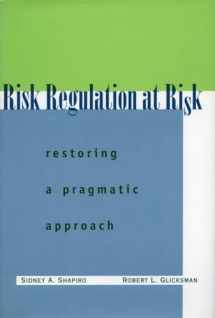
Risk Regulation at Risk: Restoring a Pragmatic Approach
Book details
Summary
Description
In the 1960s and 1970s, Congress enacted a vast body of legislation to protect the environment and individual health and safety. Collectively, this legislation is known as “risk regulation” because it addresses the risk of harm that technology creates for individuals and the environment. In the last two decades, this legislation has come under increasing attack by critics who employ utilitarian philosophy and cost-benefit analysis. The defenders of this body of risk regulation, by contrast, have lacked a similar unifying theory.
In this book, the authors propose that the American tradition of philosophical pragmatism fills this vacuum. They argue that pragmatism offers a better method for conceiving of and implementing risk regulation than the economic paradigm favored by its critics. While pragmatism offers a methodology in support of risk regulation as it was originally conceived, it also offers a perspective from which this legislation can be held up to critical appraisal. The authors employ pragmatism to support risk regulation, but pragmatism also leads them to agree with some of the criticisms against it, and even to level new criticisms of their own.
In the end, the authors reject the picture―painted by risk regulation’s critics―of widely excessive and irrational regulation, but the pragmatic perspective also leads them to propose a number of recommendations for useful reforms to risk regulation.


We would LOVE it if you could help us and other readers by reviewing the book
Book review



